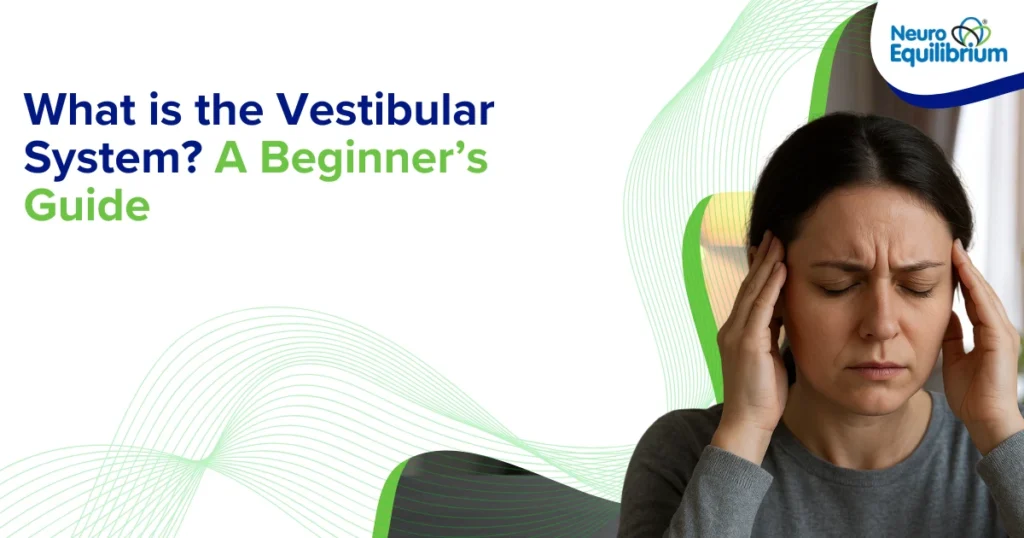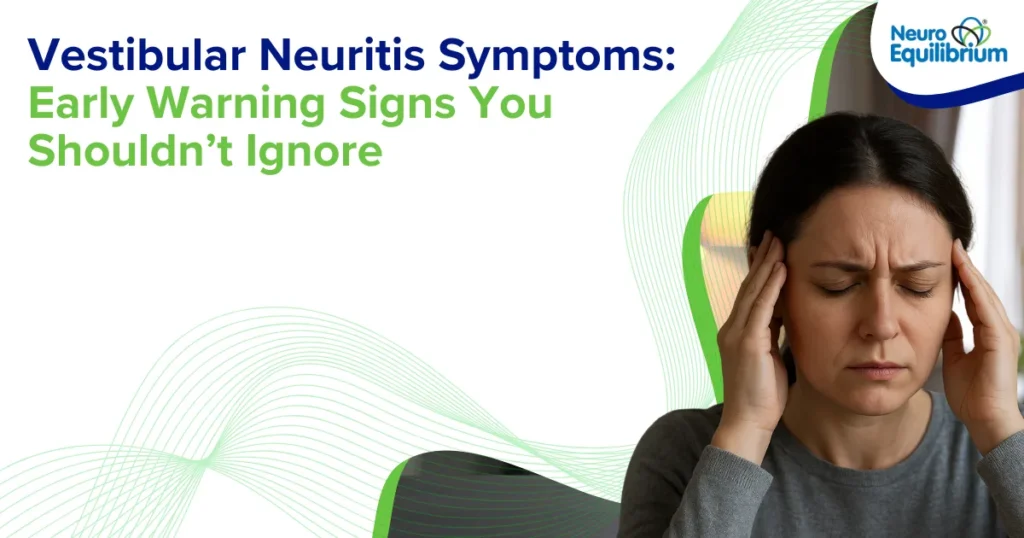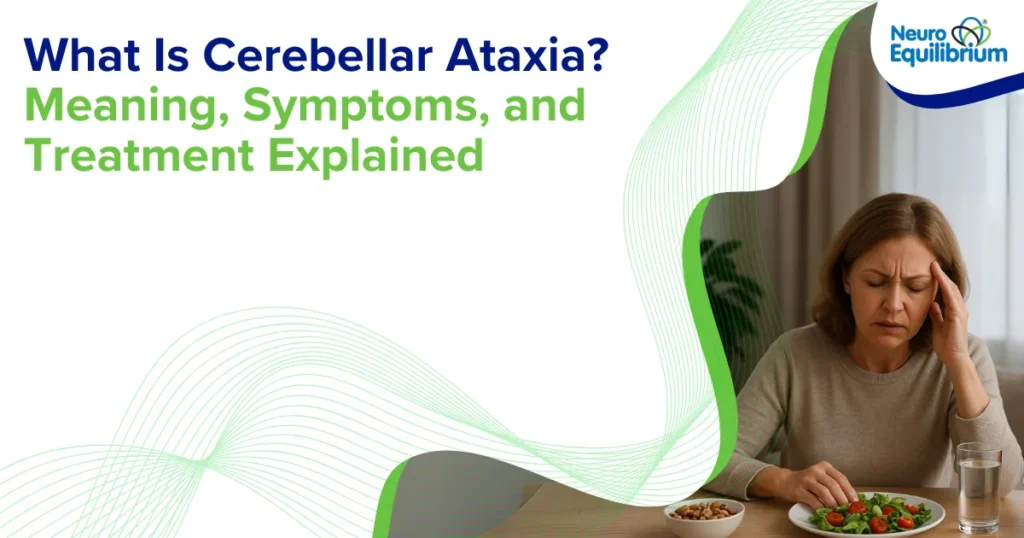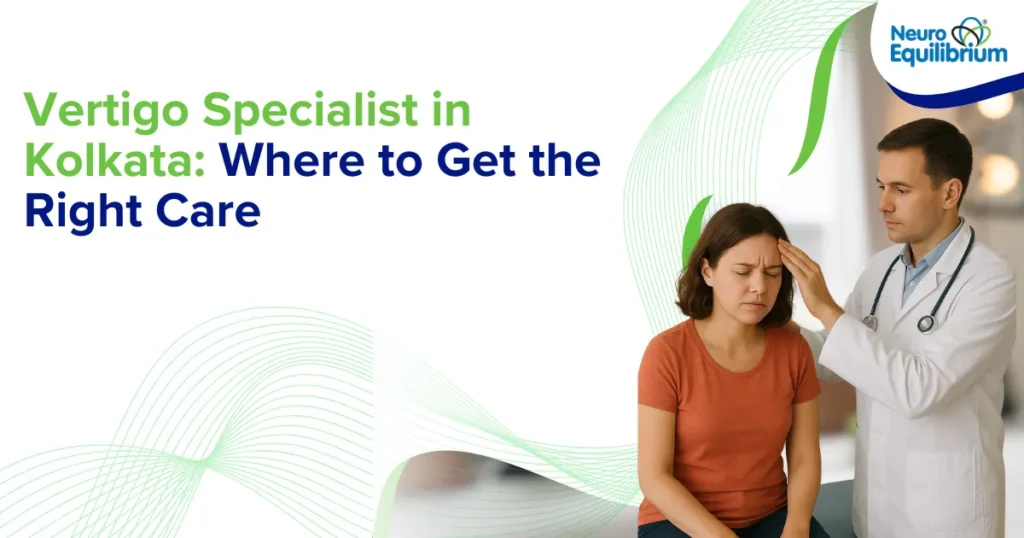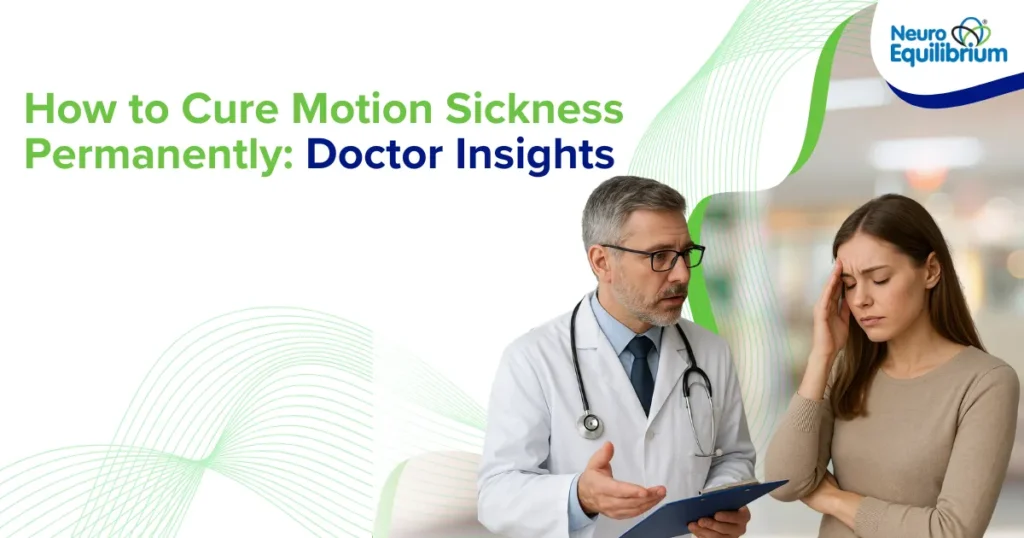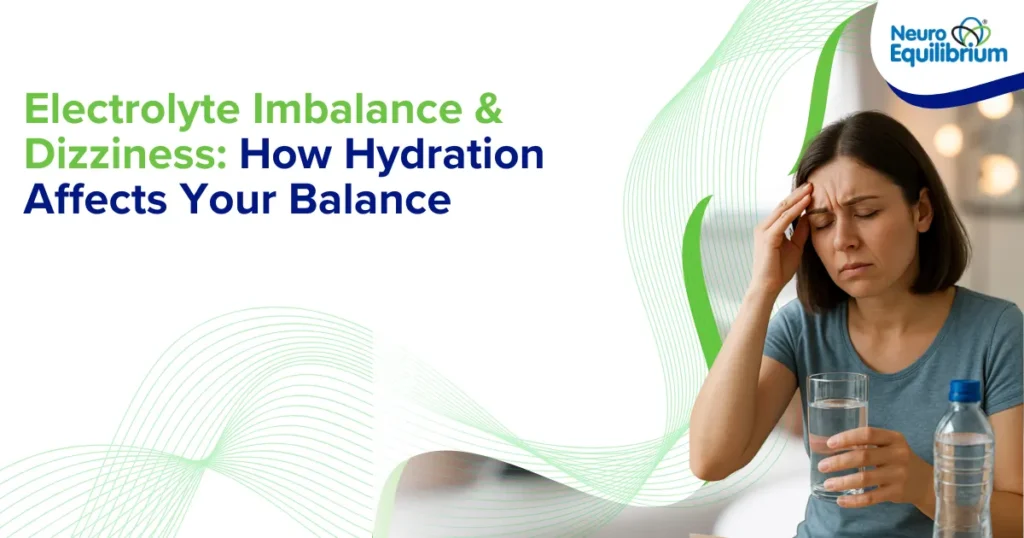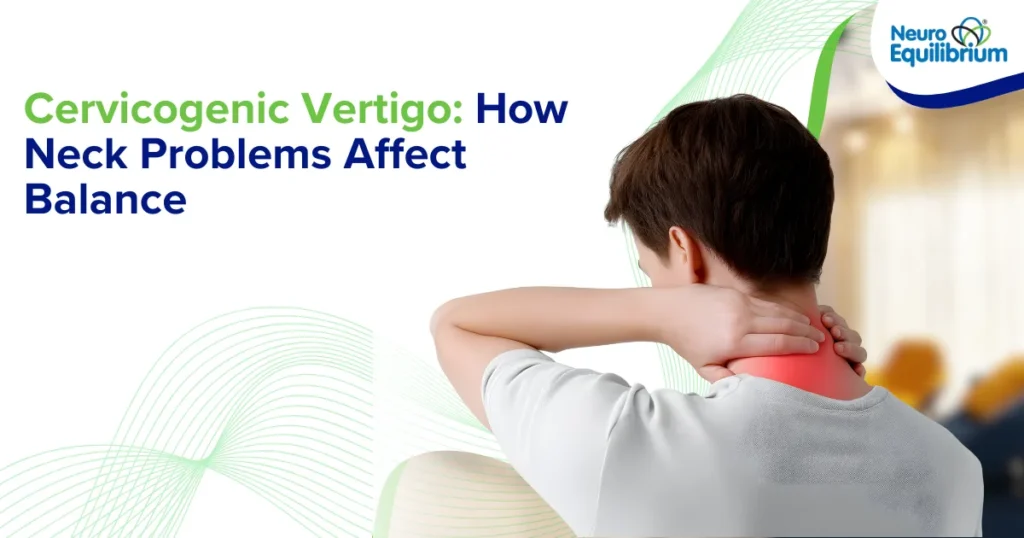One of the most important yet often overlooked senses we have is balance. It enables us to walk, climb stairs, read signs while moving, and drive without feeling disoriented. When this system fails, dizziness or vertigo can severely affect one’s quality of life.
The center of balance in the body is referred to as the vestibular system. This system lies deep within the inner ear and constantly communicates with the brain, our eyes, and muscles, to keep us steady. In this guide, we will try to explain what the vestibular system is, its mechanism, what occurs when it fails and how problems associated with the system can be identified and treated.
1. Balance in Daily Life and Loss of Independence
For a healthy person, everyday activities come naturally and don’t require any special effort. Walking in a straight line, reading while walking, or stepping onto an escalator, all of these are so routine that they feel effortless.
However, in case of malfunctioning of the balance system, dizziness or vertigo (as it is commonly called, chakkar) may occur. This can take away a person’s independence and confidence:
Even such simple things as walking, straight posture, or attention can be unsafe.
Even simple tasks like crossing the road or using an escalator can sometimes contribute to feelings of instability. Patients often become fearful of falling, causing them to hold back and even withdraw socially. Dizziness in adults increases the risk of falls among the elderly, which can be quite dangerous and life threatening.
At the center of all this lies the vestibular system.
Know More About Vestibular Health
- Why Your Vestibular Health is Key to Overall Well-being
- Sunita Williams’ Return & Vestibular Challenges in Space Adaptation
- 5 Questions to Ask Your Doctor Before Vestibular Testing
2. What Is the Vestibular System?
There is a balance system of the body that is known as the Vestibular system. It is located in the inner ear, and it works 24 hours round the clock to stabilize, offer space orientation and coordination.
Key Components Explained Simply:
- Inner Ear Structures: The semicircular canals are tubes filled with fluid and they are used to determine the movement of the head. The saccule and utricle detects straight movements and gravity.
- Hair Cells: Small sensory cells which detect the movement of inner ear fluid.
- Vestibular Nerve: Carries the information of motion of the ear to the brain.
- Brain Centers: Process these signals and use them in cooperation with vision and muscle/joint feedback to provide control over balance.

3. How Does the Vestibular System Work?
The vestibular system constantly informs your brain about your body’s movement and position.
- Head Movement Detection: The fluid in the semicircular canals moves as you move your head. The hair cells detect this movement and proper information is sent to the brain about the direction and speed of movement.
- Combining Vision and Muscles: Balance does not solely rely on the inner ear but also your eyes (visual input), along with the input of muscles and joints (proprioception). These systems, combined with one another, make the systems stable.
- Vestibulo-Ocular Reflex (VOR): The reflex is what causes your head to move as your eyes remain fixed on an object. With the VOR, you are able to read a sign in your stride without the words becoming blurred.
Without the vestibular system, daily life would feel like living inside a constantly moving camera.
4. Common Problems When the Vestibular System Malfunctions
When the vestibular system is not working correctly, the signals it sends to the brain are confusing. This leads to several noticeable symptoms:
| Symptom | Description |
| Dizziness and Vertigo | Feeling like you are spinning, tilting, or swaying. Vertigo is a symptom, not a disease. |
| Loss of Balance/Unsteadiness | A wobbly or unsteady feeling, as if you might tip over while walking or standing. |
| Blurred Vision During Head Movement | Difficulty focusing when the head moves, often described as “camera shake.” |
| Nausea | Often occurs with acute vertigo and may be accompanied by vomiting. |
| Increased Risk of Falls | Especially concerning people over 60. |
Common Conditions That Cause Vestibular Problems:
- BPPV (Benign Paroxysmal Positional Vertigo): The most common type of vertigo. The tiny calcium carbonate crystals (otoliths) relocate and cause an imbalance signal.
- Meniere Disease: This is the result of the build-up of fluid pressure in the inner ear, which results in vertigo, a loss of hearing and a ringing in the ears.
- Vestibular Neuritis: The inflammation of the balance nerve as a result of a viral infection, which results in sudden and acute spinning and imbalance.
- Acoustic Neuroma: A benign tumor of the nerve of balance which results in progressive hearing loss and unsteadiness in rare cases.
- Trauma to the Head/Concussion: This condition may cause post-traumatic dizziness by displacing inner ear crystals.

5. How Vestibular Problems Are Diagnosed
Because vertigo can result from many different disorders, it’s important to get an accurate diagnosis. Usually, specialized tests follow a thorough medical history and physical assessment to ensure everything is properly evaluated.
Advanced Diagnostic Tests:
- Videonystagmography (VNG): BPPV is diagnosed with the help of involuntary eye movement recorded with the help of infrared goggles.
- Posturography: This is a test of how you stand up in various situations, e.g. standing on a moving platform.
- Dynamic Visual Acuity (DVA): Examines VOR function by testing your clarity of vision during movement of the head.
- Subjective Visual Vertical (SVV): Tests the accuracy of straight posture.
- Audiometry: The test that determines hearing which is important in the diagnosis of the Meniere disease and acoustic neuroma.
The neuroEquilibrium clinics’ approach is rooted in advanced vestibular diagnostics, which are essential for pinpointing the exact cause of dizziness. This precision allows us to tailor a treatment plan that fits each individual perfectly.
6. Treatment and Rehabilitation
The treatment of vestibular problems depends on the underlying cause.
Vestibular Rehabilitation Therapy (VRT)
VRT is like physical therapy for the balance system. It uses targeted exercises to help the brain adapt and regain stability.
Examples of VRT Exercises:
- Repositioning Maneuvers: The head and body motions like Epley maneuver have the potential to reposition the moved crystals in BPPV and offer an immediate relief.
- Gaze Stabilization: Concentrating on a fixed point in transporting the head to re-establish a coordination of the head and balance.
- Balance Training: Standing on varying surfaces or walking under difficult conditions with the view to enhancing stability.
Lifestyle Adjustments
- Hydration: Dizziness can be decreased by remaining well hydrated.
- Prevention of Sudden Head Movements: The slower the change in position, the fewer symptoms will flare up.
- Eating: Dietary restrictions in Meniere disease reduction of salt and dietary triggers that trigger migraine like old cheese or MSG.
- Light Exercises: Yoga and tai chi will enhance posture and balance and decrease stress.
Cognitive Behavioural Therapy (CBT)
Chronic dizziness often creates anxiety and avoidance. CBT helps patients challenge negative thought patterns and gradually regain confidence in daily activities.
7. Living with Vestibular Disorders
The good news is that most vestibular disorders are treatable once diagnosed correctly.
- Reassurance: Conditions such as BPPV can often be treated with simple maneuvers that may provide permanent relief. Others are getting much better with rehabilitation.
- Early Intervention: Does not rule out chronic dizziness. Early diagnosis results in faster treatment and outcome.
- Family Support and Consistency: Family encouragement and adherence to prescribed exercises are both essential to long-term success.
Conclusion
The vestibular system is an invisible balance that is important to move around the world safely and confidently. Dizziness and vertigo can sometimes complicate our everyday lives when it fails to work rather well, and it may also compromise our autonomy and predispose the likelihood of falls. However, there is a positive side of this issue: vertigo can in many cases be cured! Given the correct diagnosis, as well as the application of the vestibular rehabilitation therapy, and the encouragement of healthy choices in life, a lot of patients discover that their stability is restored, and they are able to resume their daily lives.
At NeuroEquilibrium, we are committed to the treatment of the vestibular system with the help of sophisticated diagnostics and individual rehabilitation. In case dizziness or vertigo is affecting your life, there is no need to wait and contact NeuroEquilibrium today and make a good step toward a more stable, self-confident and lively future.
What exactly does the vestibular system control?
It aids balance, stabilizes vision when the head is in motion, and spatial (body) orientation.
Is dizziness always caused by vestibular problems?
Not always. Low blood pressure, side effects of medication or neurological disorders can also cause dizziness. It can be determined by a specialist examination to determine the real cause.
Can vestibular disorders be cured?
Yes, a few of them (such as BPPV) are treatable. These may be incurable but rather manageable with treatment and modifications in their lifestyles.
How long does vestibular rehabilitation take?
BPPV may be relieved instantly, whereas other conditions might need weeks and even months of regular exercises.
Are vestibular problems more common in older adults?
The reason is that age-associated alterations in inner ear and balance mechanisms increase dizziness among the elderly.






